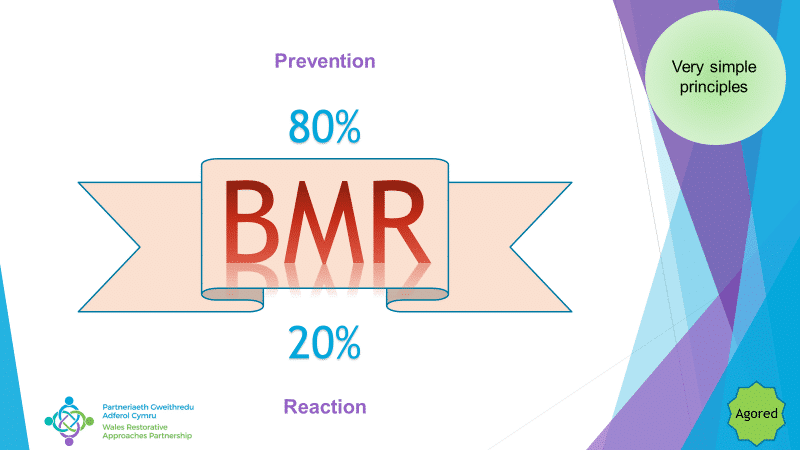The term “Restorative Approaches” is an increasingly used phrase in my sectors, in particular those of a supportive nature such as housing, education and family work. However, there can be at times, confusion around what exactly it is… or are?
insert pic of confusion
Is it “what is restorative approaches” or “what is a restorative approach” or “what are restorative approaches”?
For the most part, it doesn’t matter. As long we know that we are talking about the same thing. For the purpose of this course we will refer to it as plural, restorative approaches.
Why? Because we see restorative approaches as being a combination of lots of different tools and techniques, or ways in which we can approach a situation. It encourages us to be flexible. To meet the other person’s needs rather than our own.
So with that in mind what is the definition of restorative approaches?
“A way of being which includes outlook and the day to day skills involved in preventing and pre-empting conflicts and harm. It builds and maintains relationships and community, as well as reacting/ responding when things go wrong”
So what does this mean?
Well, to answer this we should break the definition down into sections:
“A way of being” – do as banner
This may sound philosophical, and in fact it is. Restorative approaches are not just a specific set of tools we use some of the time. But instead, a way we approach all of our relationships. We are not just restorative on a Monday morning, but try to be at all times.
Therefore, it is a value-based approach to life. The way in which we try to interact with others, and ourselves too.
What may some of these values be? Respect, empowerment, kindness, empathy and supportive challenge to name a few. We will cover this in more detail in the lesson titled “Values”.
“Skills involved in preventing and pre-empting conflict and harm” – do as banner
Not only is it a value-based approach, but one that gives practical tips and tools to use. Unlike some tools out there that focus on how to “win an argument” restorative work focusses on the skills used to
a) Prevent conflict, or at least the harm caused by conflict (as conflict is a normal human interaction)
and
b) Work with another person to find a suitable way forward for both
and
c) Rebuild relationships when they have been damaged.
Which nicely lends itself to the third part of the definition
“It builds and maintains relationships and community” – do as banner
Restorative approaches provide us with the skills for BUILDING, MAINTAINING and REPAIRING relationships.
This is not evenly split however. We want the majority of our time being spent on building and maintaining relationships and not on reparation. If we are spending a lot of time repairing relationships and community, then something is going wrong somewhere. One thought that we must try to move away from is that “if it ain’t broke, don’t fix it”. This thought process promotes the neglect of regularly maintenance. If there isn’t something obviously wrong, then it must be working fine.
This leaves small issues to turn into bigger ones, that are sometimes un-repairable.
A real life example of this can be seen in offices. One member of staff doesn’t complete a piece of work to another’s standards. Rather than address it then and there, it gets swept under the carpet. As we do this over and again, our frustration builds, which turns into resentment, which can create cliques, a tense working environment and people to leave positions. (pic of office in this text)
In this scenario, restorative approaches can give people the skills to challenge effectively, but also receive challenge, so the relationship and working environment is maintained, and possibly improved.
improve the picture below

As you can imagine, there are lots of different ways to tackle the sitation mentioned aboves, hence, restorative approaches.
So to sum it up, restorative approaches are the way in which we interact with others on a day to day basis. It includes lots of different tools and techniques to help build, maintain and repair relationships. It helps us create environments where people’s needs are met.



